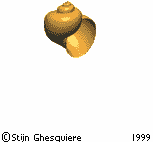From the research of the insight sheet about one of my participants watching snails and seeing the movement of the snails and through that movement understood when the biosphere was failing and eventually died.
I came up without the idea of tracking the snails as the move around the biosphere. in order to see changes within the biosphere and act as a control and monitor all changes within the biosphere. As once the snail dies the system dies so you can see when your biospheres system is under threat when the snails start to slow down or die.
The computer will do most of the recording so that observations can be made later by the user.
From this I went on to make a rough drawn up prototype of the device.
Which would consist of the the biosphere which would monitor the movement of the snails as well as the temperature, ph and any other important monitoring factors. The biosphere would be also monitored by a web cam so that the overall view of the biosphere could be recorded along side the movement of the snails.
Then all data would be fed to a website where the biosphere could be monitored and seen by others all over the world.
The device would be open source so people could use it to study biospheres how they wanted and also add to the website and also build new modules and work out different ways of monitoring all life forms within the biosphere.
It will be called open source biosphere.
snails seemed the easiest to track as I could paint them or stick a tracker on their shell without too much trouble
and then looked at how I could track/ monitor snail activity electronically:
I thought about a motion detecting camera but thought at night that would be difficult to see
Thermitrack allows real time thermal tracking which can be connected to a mac or arduino through usb.
Thermitrack - Thermal imaging tracking camera
Although I later found out that snails are cold blooded so are probably the same temp as water so back to the drawing board.
I started to look ar Rfid tags like that which are used for pets such as cats and dogs and then found out scientist from Princeton university were using tiny rfid tags to track dragon flies over long distances so surely I could do something similar on a smaller scale with snails.
 The data revealed that the dragonflies' migration patterns are strikingly similar to those of songbirds, suggesting there is a strong evolutionary link to their behaviours.
The data revealed that the dragonflies' migration patterns are strikingly similar to those of songbirds, suggesting there is a strong evolutionary link to their behaviours.
I found this picture of a Paper wasp with RFID tag attached by the Zoological society of London.

Next I decided to look into how small I can purchase Rfid tags and also how much they would cost:
Hitachi is producing tiny rfid tags
Hitachi Achieves 0.05-mm Square Super Micro RFID Tag, 'Further Size Reductions in Mind' -- Tech-On!

No comments:
Post a Comment